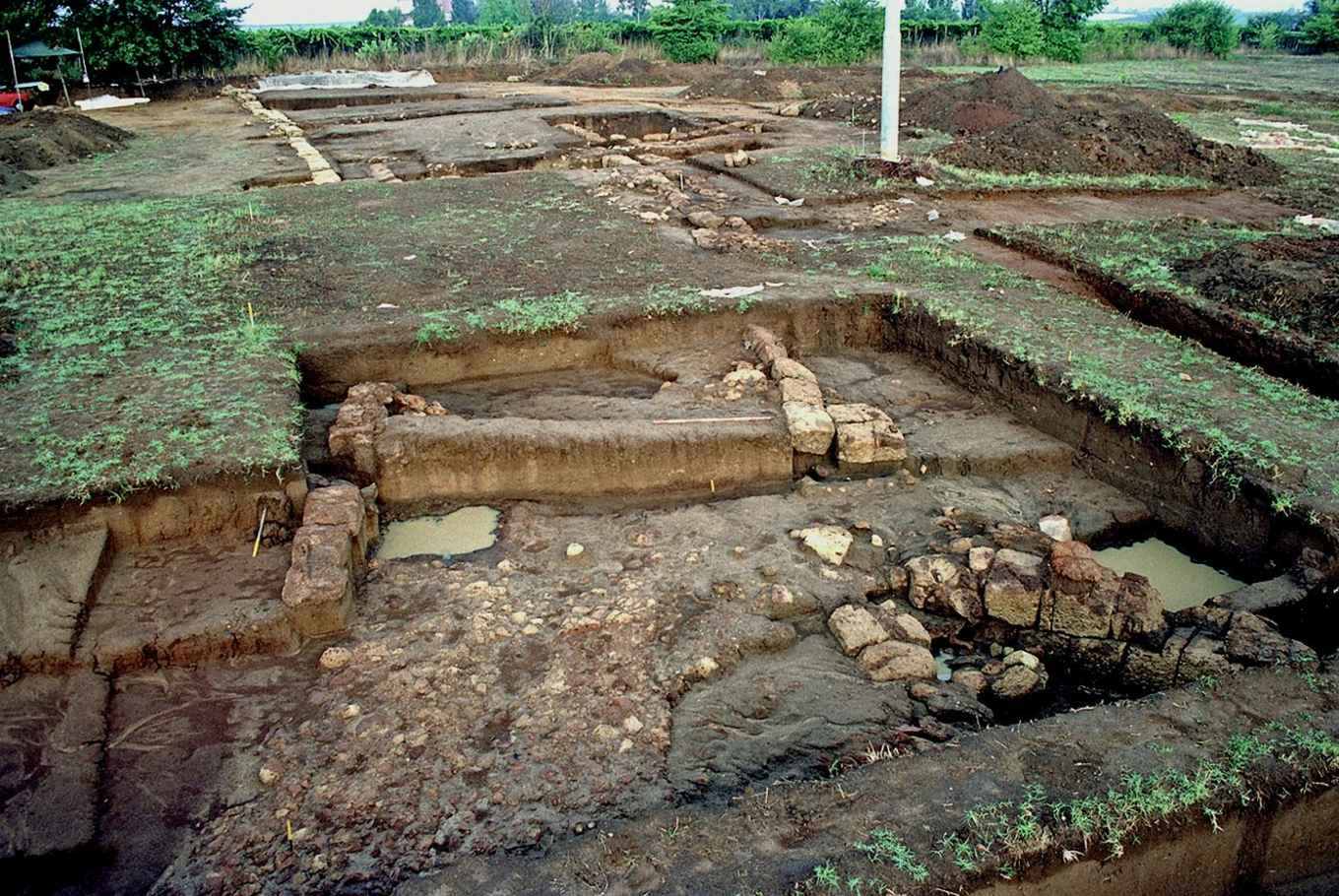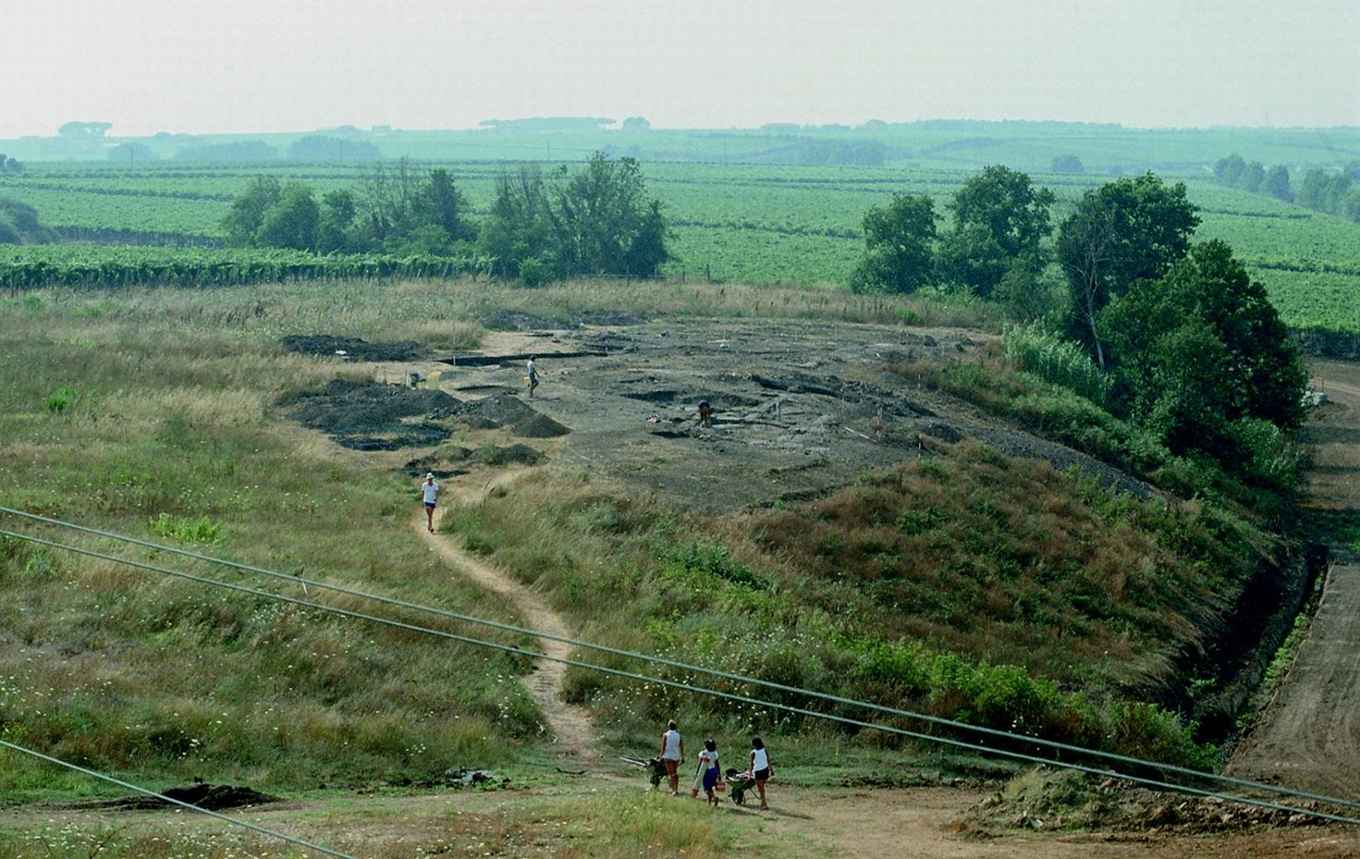Excavations Poggio dei Cavallari
(1984; 1996-97; 2004-2010)

Research of the monumental road from the Archaic period
In 1996 and 1997, the excavation of an Archaic road discovered in 1984 in the lower settlement area was continued. This resulted in a complete image of at least two successive building phases. The Archaic road, laid out in a deep natural depression, was raised and monumentalized in the late 6th century BC by means of two parallel, one meter high walls of rectangular tuff blocks, set up to 6 m apart. The space between the walls was filled in with clay, earth and rubble, which together with the walls was covered by a pavement of pebbles and compressed tuff. Probably somewhere in the second half of the 5th century BC the road was repaired, its level raised and widened to nearly 10 meters. Along the north side of the road some graves from the 5th century BC were discovered. They are similar to those in the Southwest Necropolis and on the acropolis, found by the University of Groningen, both in type and burial gifts.
In 2004, after the abolishment of an old vineyard, the research of the road was extended to the west. The total length of the road brought to light is now about 800 meters. In at least two places southern branch roads have been discovered also demonstrating two building phases. Meanwhile the remains of two buildings comparable to those known from the acropolis have been excavated along the south side of the road. Recent excavations show that these buildings were destroyed together with the monumental phase of the road. A new and larger road was constructed on top of the destroyed remains but abandoned probably not very long after its construction, since at least forty 5th- and 4th-century graves were recently discovered to have been dug into the two superimposed road levels.
The early years of research in Poggio dei Cavallari have been published in 2002 by M. Gnade.

Research of the Roman villa
In 1984, excavations in the area of Poggio dei Cavallari, at a short distance of the north side of the Archaic road, revealed the remains of a Roman villa. The villa, built in the 1sth century AD, remained in use until the 4th century. It consists of a pars rustica and a pars urbana separated by an open court. The pars urbana comprises a bath complex. The mosaic and marble fragments found in the rooms make it likely that the rooms were once richly decorated. The pars rustica was only partly excavated, revealing, i.e. a room fitted out for wine making. Stables, threshing floors and storage rooms are assumed in the as yet unexcavated parts of the villa. Underneath the open court a cisterna was found with a capacity of some 100.000 litre.